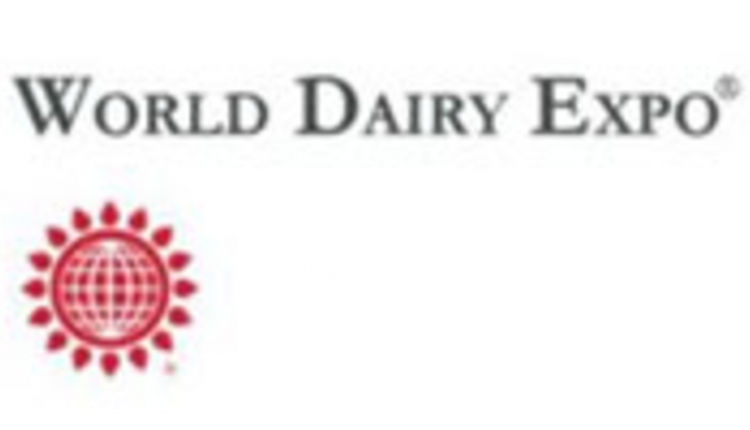The information below has been supplied by dairy marketers and other industry organizations. It has not been edited, verified or endorsed by Hoard’s Dairyman.

It is becoming increasingly difficult to find reliable, well-trained labor to milk cows. With new or inexperienced staff doing the milking, there’s also a greater need for operator safety and simplicity. Automated batch-style milking offers a new way for farms to address these labor concerns while improving cow comfort and herd management.

“Automated batch-style milking combines the labor savings and technology benefits of a robot with the management style of a parlor,” says Julie Whitmer, automated milking system (AMS) business development manager for GEA.
With automated batch-style milking, cows are milked in groups at fixed milking times using a row of box robots, simulating a conventional parlor setup.
“Built on our box robot’s proven technology and performance, this milking style gives dairy farmers another option to milk their cows with more data and consistency,” says Whitmer. “It also gives dairies the flexibility to upgrade their milking facilities while using existing barns, holding pens and sorting areas.
Here’s how farmers can realize more advantages with batch-style robotic milking:
Enhance cow and worker safety
Automated batch-style milking significantly reduces the need for several well-trained people to perform cow prep procedures and handle milking tasks during every milking shift. Unlike a parlor, this system does not require anyone to be present in the milking area, reducing labor costs and the challenge of finding reliable workers. Employees can thrive with streamlined, flexible job tasks, while the robots handle the standardized processes.
“Batch-style milking enhances safety and comfort for the cow and employee,” says Whitmer. “You can minimize the chance for injuries by reducing the potential of risky interactions between people and cows in the parlor – all while making the milking experience quiet, consistent and more enjoyable for the cow.”
When accessing the cow is required to complete tasks like mastitis treatment or dry-off, GEA’s box robot puts employee safety first. It allows for easy rear access to the udder to safely treat cows, much like a parallel parlor.

Centralize maintenance and milk flow
With automated batch-style milking, the boxes and milkhouse are in closer proximity compared to some traditional box-robot farms. This centralized system reduces milking and chore interruptions and makes any necessary maintenance easier to perform.
“Since you have downtime between milkings, you have more time to service the robots without disrupting daily routines,” says Whitmer.
If a robot requires service during milking, GEA’s “plug-and-play” service module makes it easy to swap out the system's mechanics with a spare module, allowing the boxes to continue milking while service is completed.
Maintain efficient cow flow
Automated batch-style milking can save time handling cows, minimize disruption and make it easier to complete tasks. Cow flow and management resemble conventional parlor milking systems. See an example in this drone video.
“You don’t have any fetch cows since you’re bringing the cows up to the boxes to be milked,” says Whitmer. “With all cows exiting the boxes at a fixed milking time, it’s easy to sort out cows that need attention instead of looking at a fetch list and finding them hours later.”
Other tasks, such as running cows through a foot bath and hoof trimming, can be completed just like with a traditional parlor.
Meet specific nutrition demands
Another advantage of automated batch-style milking is the opportunity to address individual cow nutrition demands.
“We can top-dress the bunk ration by feeding more energy and protein in the robot,” says Whitmer. “This helps you push individual cows while controlling costs more at the bunk.”
Adjusting rations ahead of time and feed training the cows is one of the biggest things a farm can do to prepare for a transition to automated batch-style milking.
Experience consistent milking
Automated batch-style milking is a great way to bring more consistency and efficiency to milking cows.
“You can expect consistent milking by delegating the milking process to automation,” says Whitmer. “GEA’s milking robots are built on proven technology, providing a strong foundation for this style of milking.”
GEA’s In-Liner-Everything™ technology performs every step of the milking process in a single attachment – all within the teat cup.
“This streamlined process maximizes the milk letdown effect from the cow for faster milking times, which leads to better box times and more cows milked per hour,” says Whitmer.
A modern herd management platform offers the latest technology and delivers valuable insights for proactive decision-making. Its user-friendly interface and mobile application make it easy to monitor your herd at all times.
Ready to unlock the potential of automated batch-style milking? It can deliver an efficient, stress-free process for your employees and cows – and you can keep many of your barn management practices the same. Ask your local GEA automated milking equipment dealer about the GEA DairyRobot R9600 automated batch milking system.
About GEA
GEA is one of the world’s largest suppliers of systems and components to the food, beverage and pharmaceutical industries. The international technology group, founded in 1881, focuses on machinery and plants, as well as advanced process technology, components and comprehensive services.
With more than 18,000 employees, the group generated revenues of about EUR 5.4 billion in more than 150 countries in the 2023 fiscal year. GEA plants, processes, components and services enhance the efficiency and sustainability of customer’s production. They contribute significantly to the reduction of CO2 emissions, plastic usage and food waste. In doing so, GEA makes a key contribution toward a sustainable future, in line with the company’s purpose: “Engineering for a better world.” GEA is listed on the German MDAX, the STOXX® Europe 600 Index and is among the companies comprising the DAX 50 ESG, MSCI Global Sustainability as well as Dow Jones Sustainability World and Dow Jones Sustainability Europe Indices.


